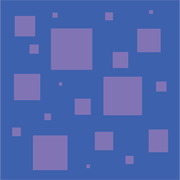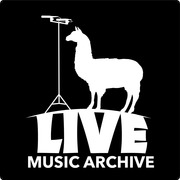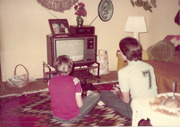DTIC ADA204011: NRL's Deep Sea Floor Search ERA: A Brief History of the NRL/MIZAR Search System and Its Major Achievements
Bookreader Item Preview
Share or Embed This Item
texts
DTIC ADA204011: NRL's Deep Sea Floor Search ERA: A Brief History of the NRL/MIZAR Search System and Its Major Achievements
- Publication date
- 1988-11-29
- Topics
- DTIC Archive, Brundage, Walter, NAVAL RESEARCH LAB WASHINGTON DC, *OCEAN BOTTOM, SUNKEN SHIPS, OCEAN SURFACE, TEAMS(PERSONNEL), LIGHT SOURCES, PLATFORMS, RESPONSE, MISSIONS, SEARCHING, HISTORY, SAMPLING, INSTRUMENTATION, NAVAL RESEARCH, MARINE BIOLOGY, LOSSES, HYDROPHONES, SAMPLERS, SUBMARINES, SEA WATER, AREA COVERAGE, DEEP OCEANS, NETS, SIDE LOOKING SONAR, TRANSPONDERS, CARGO SHIPS, UNDERWATER TRACKING, STROBOSCOPES, NUCLEAR POWERED SUBMARINES, MAGNETOMETERS, OCEANOGRAPHIC EQUIPMENT, UNDERWATER CAMERAS, OCEANOGRAPHIC SHIPS, UNDERWATER PHOTOGRAPHY, CONVERSION, PITCH(MOTION),
- Collection
- dticarchive; additional_collections
- Language
- English
- Item Size
- 41.0M
NRL's Deep Sea Floor Era began in 1963 when, in response to the loss of the nuclear submarine THRESHER, a small team began developing the instruments and methods to search the deep ocean floor. After photographing THRESHER in 1964 the team helped locate and recover an H-bomb in 1966. In 1968 the team located the sunken submarine SCORPION, in 1969 they found and helped recover the submersible ALVIN and 1970 they found the French submarine EURYDICE. Five times between 1970 and 1974 they photographed the nerve-gas-laden LE BARRON RUSSELL BRIGGS and collect water samples above her deck at a depth of three miles. The converted cargo ship MIZAR (T-AGOR-11) was the key surface platform in these missions. Her NRL-designed center well permitted towing a suite of instruments from the center of pitch and roll. Three hull-mounted hydrophones, a transponder on the sea floor and a responder on the instrument suite were the elements of an underwater tracking system. Cameras, strobe lights, magnetometer and side- looking sonar were the prime search instruments. A multiple water sampler and a biological trawl were added for environmental missions. A development of the search team called LIBEC, for Light Behind Camera, expanded the areal coverage of conventional underwater cameras by sixty times. The Era essentially ended when sponsorship for MIZAR was transferred to the Naval Sea Systems Command in early 1975.
- Addeddate
- 2018-02-21 21:29:24
- Foldoutcount
- 0
- Identifier
- DTIC_ADA204011
- Identifier-ark
- ark:/13960/t5hb5mw9m
- Ocr_converted
- abbyy-to-hocr 1.1.37
- Ocr_module_version
- 0.0.21
- Page_number_confidence
- 36
- Page_number_module_version
- 1.0.3
- Pages
- 52
- Ppi
- 300
- Year
- 1988
comment
Reviews
There are no reviews yet. Be the first one to
write a review.
1,576 Views
2 Favorites
DOWNLOAD OPTIONS
Temporarily Unavailable
For users with print-disabilities
Temporarily Unavailable
IN COLLECTIONS
Defense Technical Information Archive Additional Collections
Additional Collections 
Uploaded by chris85 on
 Live Music Archive
Live Music Archive Librivox Free Audio
Librivox Free Audio Metropolitan Museum
Metropolitan Museum Cleveland Museum of Art
Cleveland Museum of Art Internet Arcade
Internet Arcade Console Living Room
Console Living Room Open Library
Open Library American Libraries
American Libraries TV News
TV News Understanding 9/11
Understanding 9/11